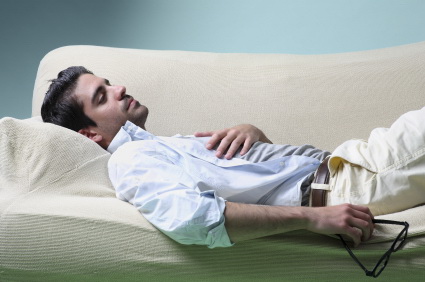It is likely you or someone close to you these days is having a hard time breathing properly due to various symptoms including a congested or runny nose, sneezing, watery eyes, throat irritations and cough. While you may think you have a common cold, if the symptoms don’t go away, it’s likely you suffer from Allergic Rhinitis or commonly known as Nasal Allergies.
A recent survey titled Allergies In Asia-Pacific (
www.allergiesinasiapacific.com) found that suffers experience a significant decrease in their productivity and quality of life. Some researchers believe that the rise of such cases is directly connected to developing countries as well in which ASEAN countries including Malaysia may be worse off!
Allergic Rhinitis is caused by first ingesting various airborne allergen particles which are present both outdoors and indoors. The worst common allergens are the ones you can’t even see such as dust mites, dust mite debris, cockroach particles and pet dander. When you breathe in these allergens, your immune system springs into action. It releases substances into your nasal passages, along with inflammatory chemicals such as histamines. Your nose, sinuses, or eyes may become itchy and congested. It should also be no surprise that many people who have allergic rhinitis also have asthma.
As there is no cure for Allergic Rhinitis, there are a few methods for treating this uncomfortable situation in both adults and children by firstly attempting to remove any source of allergens from your environment. This could mean constantly cleaning our homes making them free of dust (where the dust mites live), washing our clothes and bedding regularly and keeping our furniture well wiped and vacuumed. Unfortunately, this might also mean limiting our time with our beloved family pet!
The second method is to medicate and manage the symptoms by way of routine antihistamines, corticosteroids and of course decongestants. In this survey mentioned above it was found that two-thirds of the respondents took some form of medication. Some of these work better than others depending on the patient but most need to understand firstly how to administer them and accept that Allergic Rhinitis is a long term condition and regularly returns.
The last and now very effective method of relieving Allergic Rhinitis is simply by deploying an Air Purifier to the environment where you spend most of your time, whether the bedroom, office or school. Instead of having to spend either countless time physically cleaning your home or money on various medications, why not capture the allergens at the source.
To capture these fine particles which lead to Allergic Rhinitis, applying a HEPA (High Efficiency Particulate Air) Type Air Purifier is best! These are the same units used in operating rooms, outpatient surgery, labor and delivery, isolation rooms, intensive care and other areas requiring high efficiency filtration.
Further, demand True HEPA Air Purifiers as while the HEPA Filter itself can remove 99.97% of all particles 0.3 microns in diameter, only this level of Air Purifier can do that with an efficiency of 98% or above meaning for every 100 particles it captures, only a maximum of 2 particles are released back into the airborne environment. These Air Purifiers also capture other key contaminants such as bacteria, viruses, pollens, mould, mildew and smoke.
While it appears Allergic Rhinitis has no complete cure, is on the rise and here to stay, there are some key methods available to manage the symptoms and/or prevent them and improve our quality of life!
Filed under Common Childhood Illness | No Comments
 Empowering Pregnancy Webinar 2021
Empowering Pregnancy Webinar 2021 Empowering Pregnancy Webinar 2021
Empowering Pregnancy Webinar 2021 Announcing Our Newest Edition of Fertility Book: Catching My Baby Dust
Announcing Our Newest Edition of Fertility Book: Catching My Baby Dust Second Edition of My Precious Tots
Second Edition of My Precious Tots
 My Precious Thots 3
My Precious Thots 3

